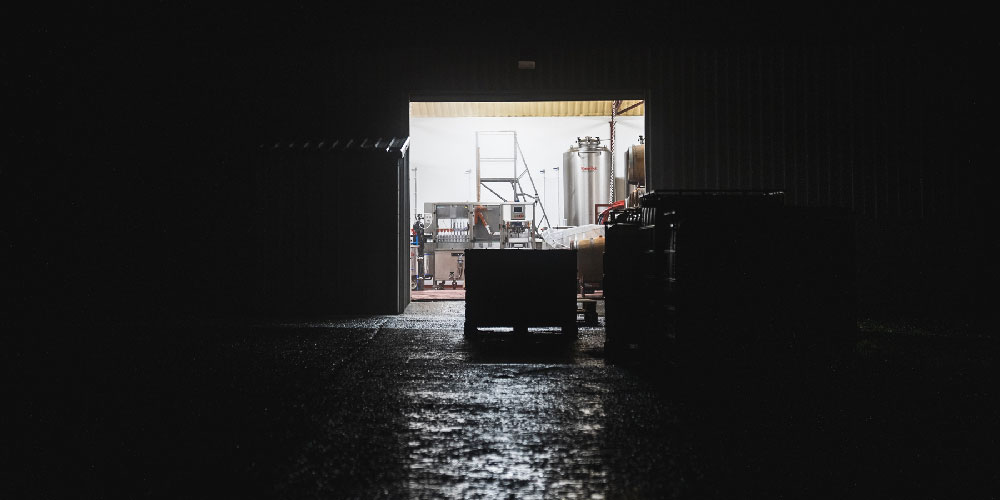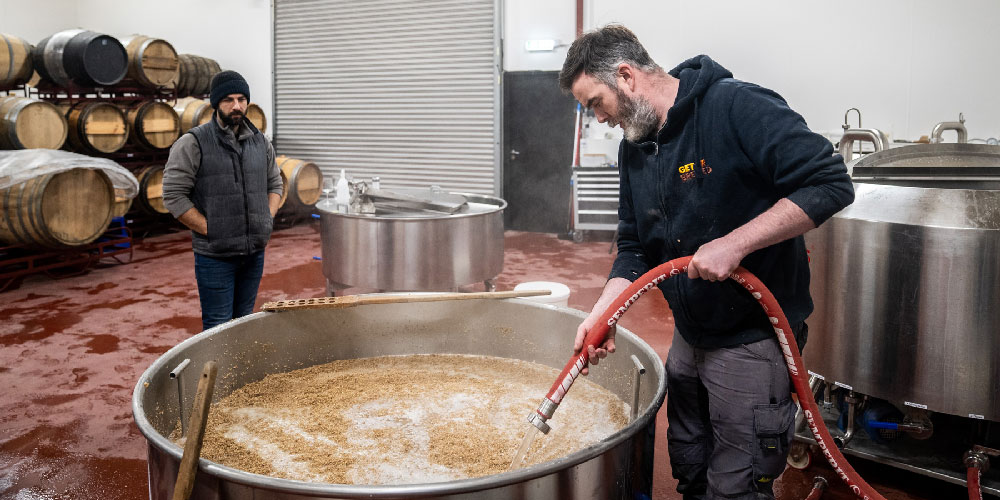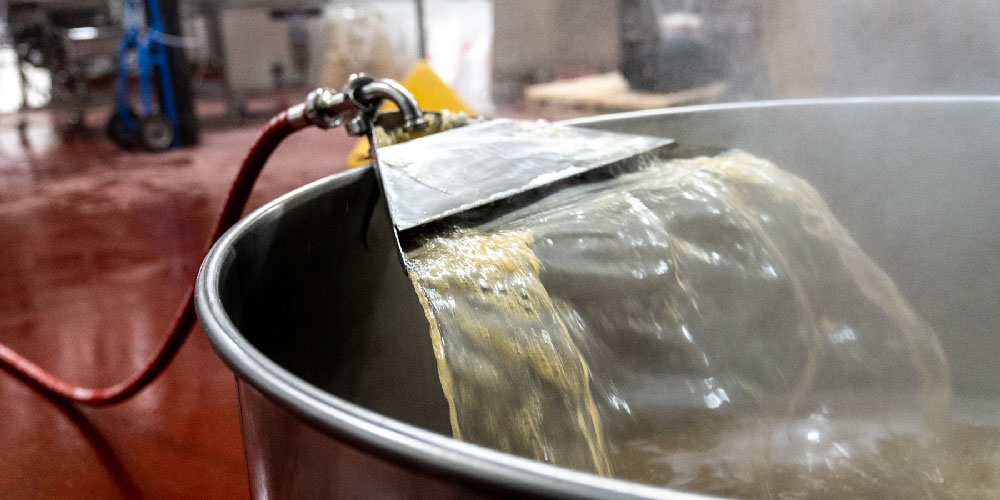
The process of spontaneous fermentation is fascinating! Geterbrewed has a passion project in this regard that we call Our Brewery, and the spontaneous aspect is The Driven Fermentation Project. The beer is created using a complex mashing schedule known as a turbid mash. The wort created from the turbid mash is then boiled before being sent to the Coolship. The coolship allows the wort to cool naturally and pick up the microflora that is in the air. A proper natural fermentation takes place with all the influence coming from the nature around the brewery.
Brewers & Blenders of Spontaneously fermented beer are very passionate about the process. The fermentation process comes from the air and the brewery environment around the coolship. Some special locations and places have complex microorganisms that create beautifully complex beers. Time & Patience are required to brew these types of beers.
How does a Coolship work?
The term coolship is a flemish word adapted into English from the word Koelschip. It is a vessel that receives wort and holds it until the environment around it naturally cools it. The vessel is open top with a large surface area to allow the wort to cool. In historical times they didn’t have the means to cool the wort efficiently, so it was pumped into these large vessels.
What is a turbid mash?
Turning everything you know about standard brewing and mashing on its head and trying to create a complex base of fermentable sugars and starches for the wild yeast to eat whilst it ages. The hundreds of different types of yeast and bacteria create an incredibly pleasing complex array of flavours that cannot be achieved any other way that with time & patience. Our Brewery took inspiration from the Lambic brewers in Belgium for our spontaneously fermented beers.
Our brewery enjoys beautiful views over Lough Neagh, and the valley blows air past our location. There are arable wheat farmers in the fields around us, and we are excited about what the Northern Irish Terroir (flavour from the area) will bring to the spontaneously fermented beers. At the time of writing this, we have entered our second season of spontaneous fermentation.

Brewing a spontaneously fermented beer goes through a range of different phases:
- Enterobacter Fermentation – this stage is usually quite fast
- Alcohol fermentation with saccharomyces – this stage can take 3-4 months
- Acidification – lactic acid bacteria & pediococcus
- Brett – the beautiful complexity as it takes control over all other stages and introduces barnyard and fruity layers
The natural fermentation process sees the beer go through different stages as different fermentation occurs. The initial results could take as long as one year to see some of the initial flavours develop. Our experience has shown that different flavours come in and out and that time really is key to seeing results. We are inspired by Lambic brewers in Belgium.

How do you age a spontaneously fermented beer?
At Our Brewery, we have chosen a range of barrels & foeders. The small barrel’s surface area to beer ratio allows a lot of character to be imparted to the liquid from the wood. We use a range of ex-wine, ex-spirit barrels and a few ex-wine Oak Foeders. The plan is to reuse these Foeders and Oak barrels for many, many years to come building up some interesting wild bacteria in the body of the wood.
The Oak barrels are totally different to fermenting in Stainless Steel. With stainless steel, we have complete control of sterilising and regulating temperature. The preparation of the oak barrels and selection of the oak barrels takes great attention. It’s a sensory experience and evokes excellent feelings that make us very passionate about the process and quality of the liquid. The Oak makes the beer, and no barrel or foeder is the same.
Experimentation is very much part of the journey we are on. We have taken a sensory approach using our physical senses. Tasting, smelling and touching the ingredients and using heritage malts and tips from the creators of the best spontaneous and Lambic beers in the world. We can adjust the turbid mash technique and try different malts. However, once the wort goes into the Coolship and onwards into the barrel, we have no control other than to monitor ph and gravity and let nature take its course.
As we build our stock of spontaneously fermented beers and we fill barrels & foeders, we are only starting this journey and have a lot to learn. We are training our senses to be able to blend different barrels, and we are super excited about the future.
Checkout the youtube video below of our latest spontaneous fermentation: